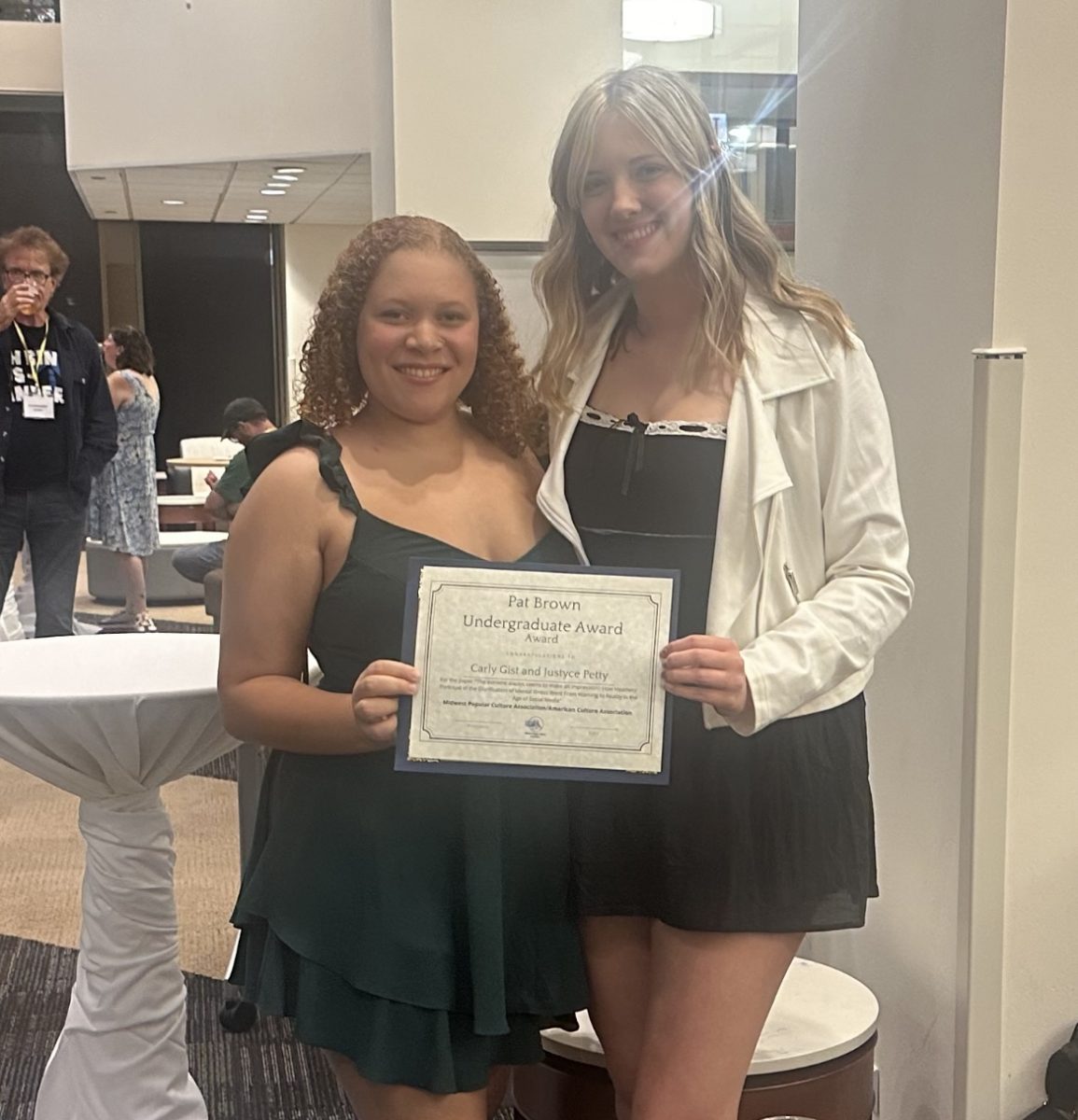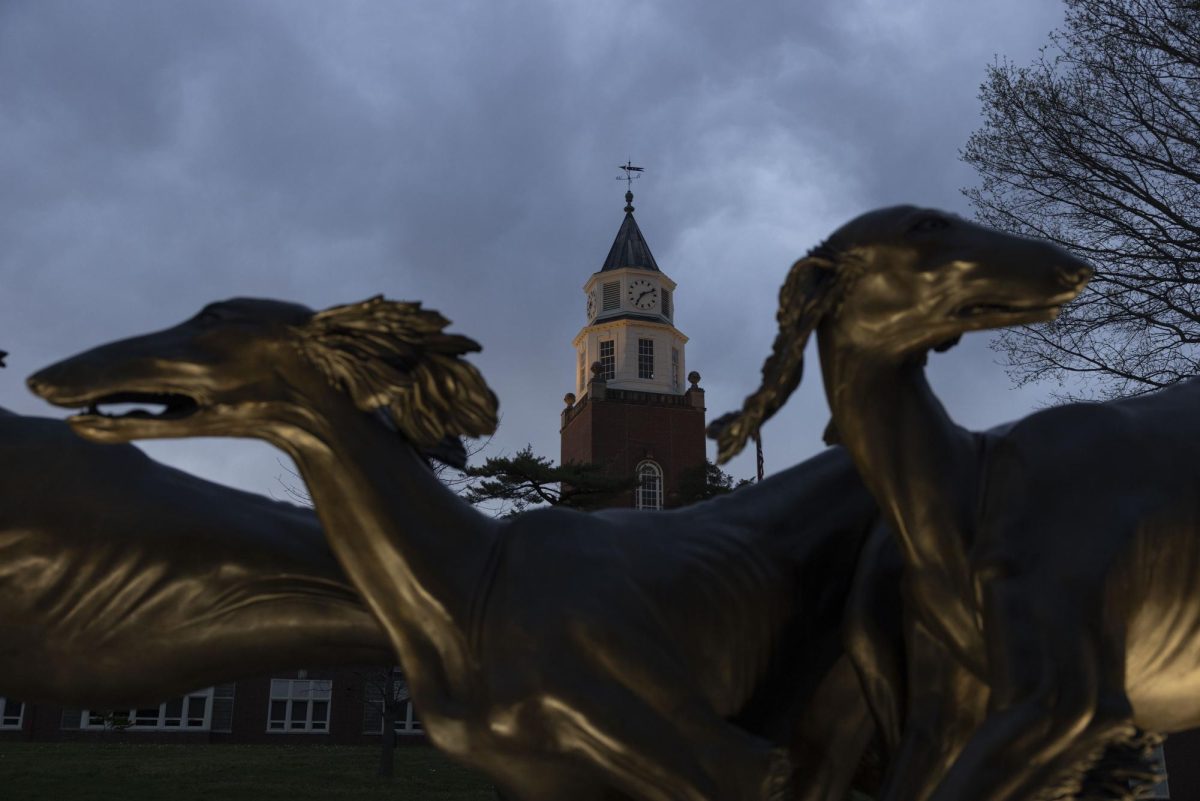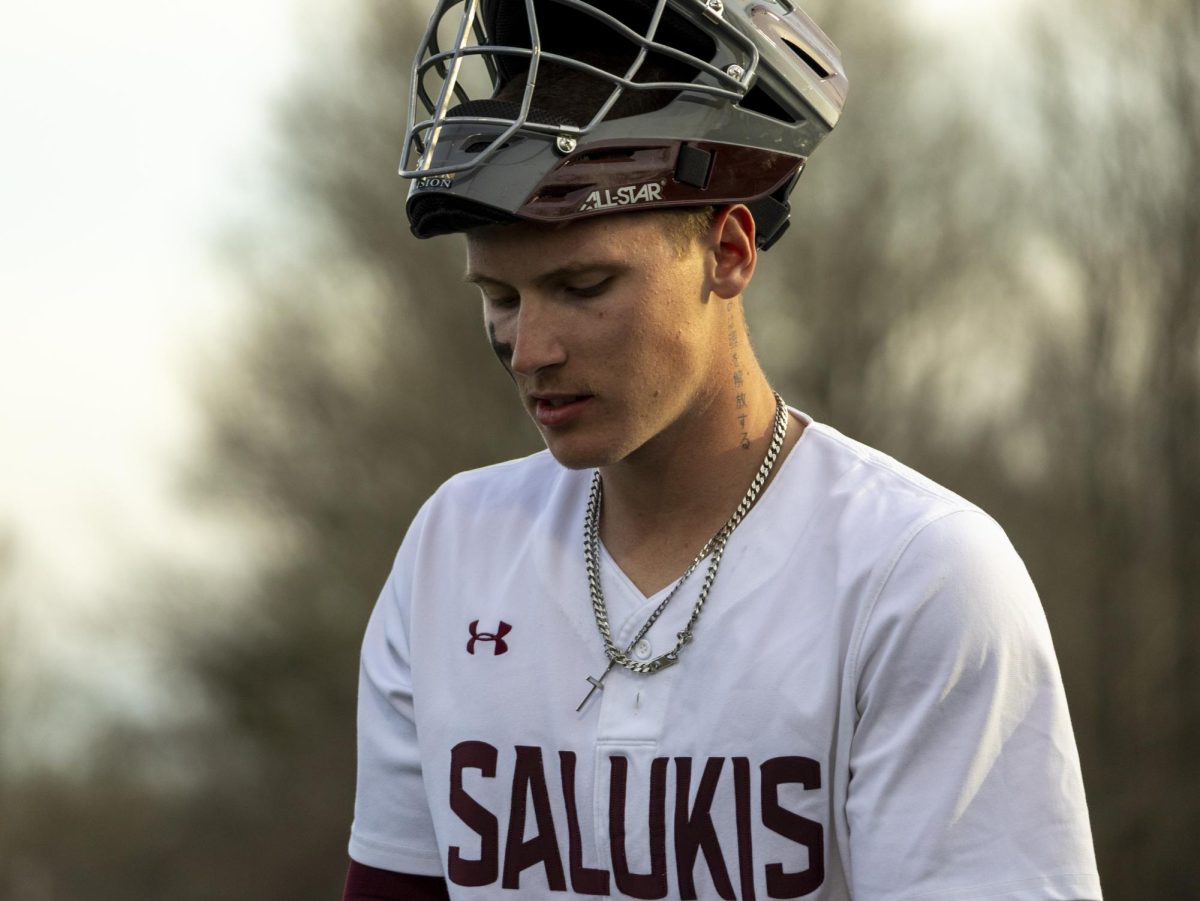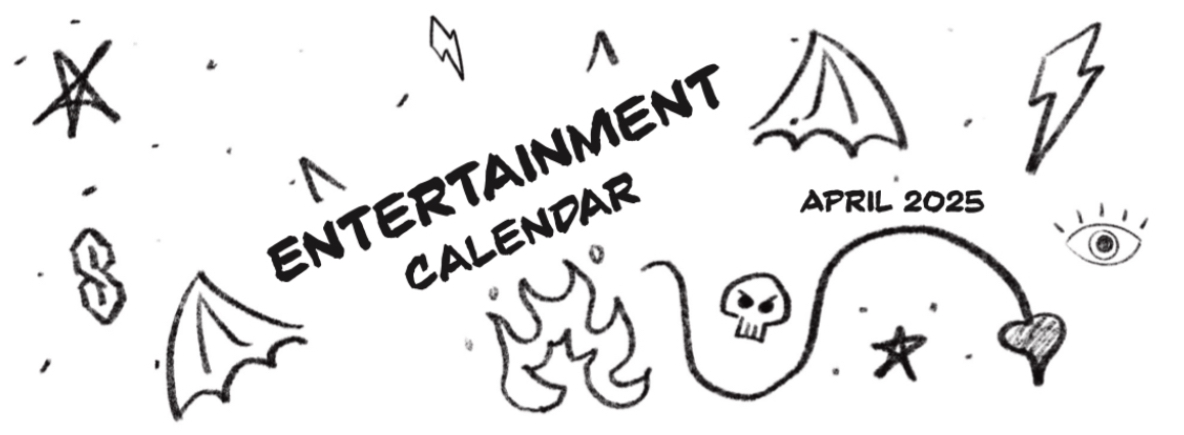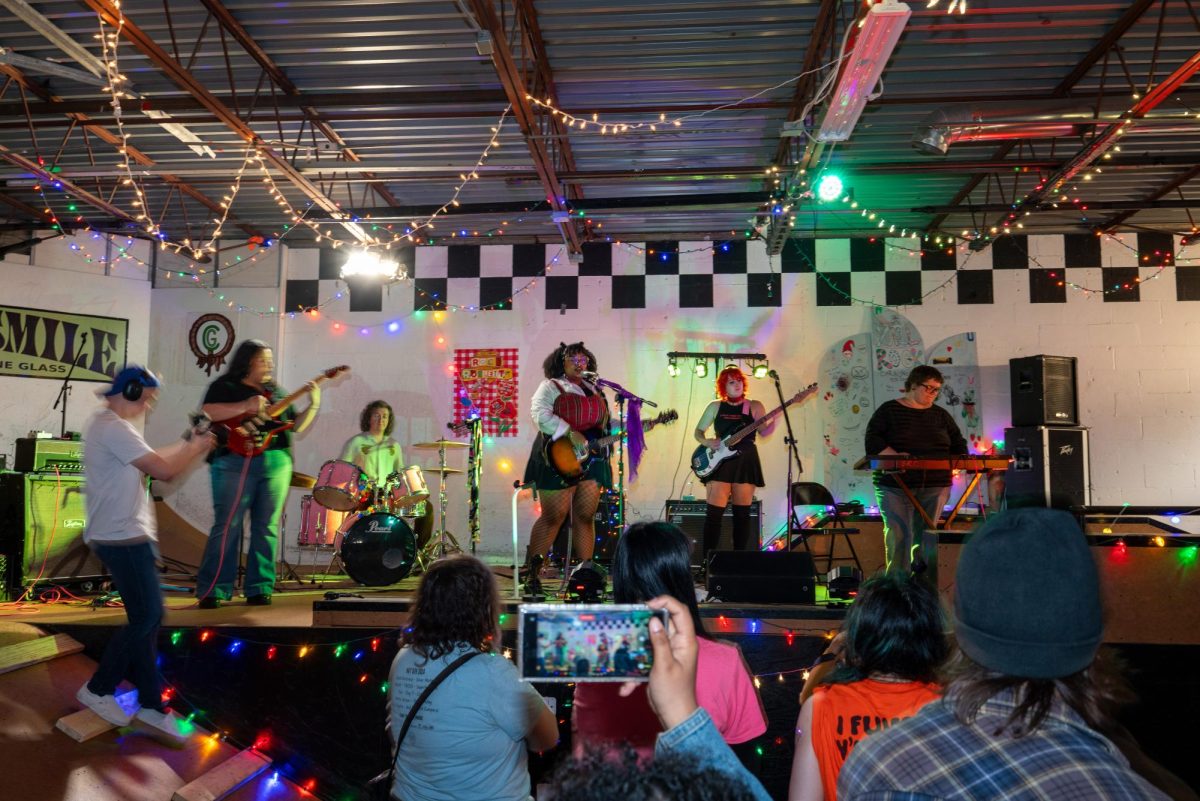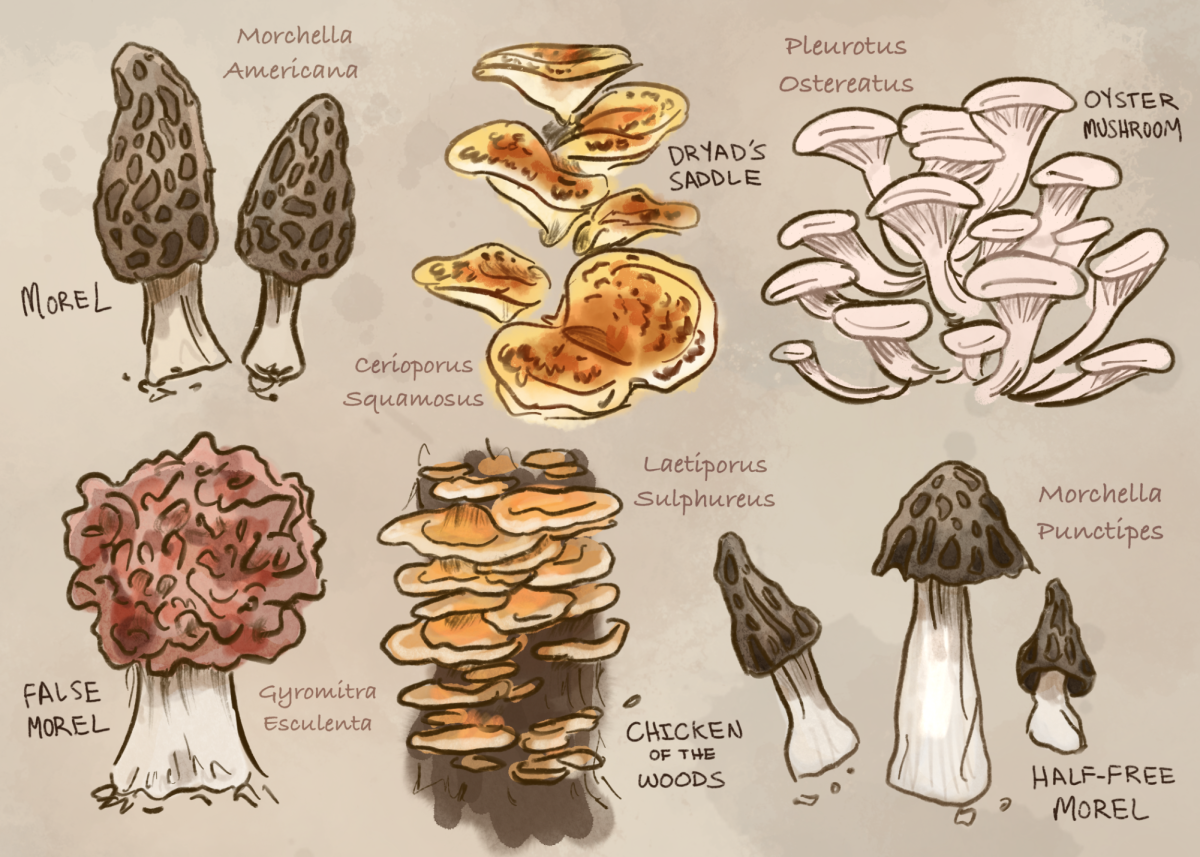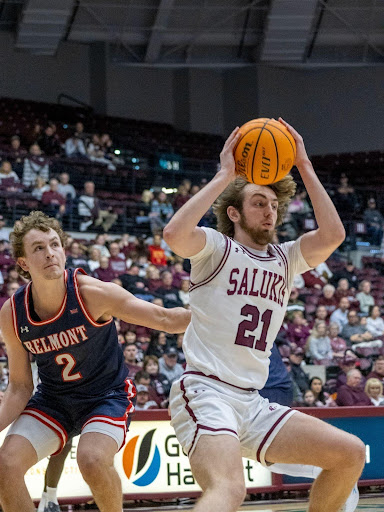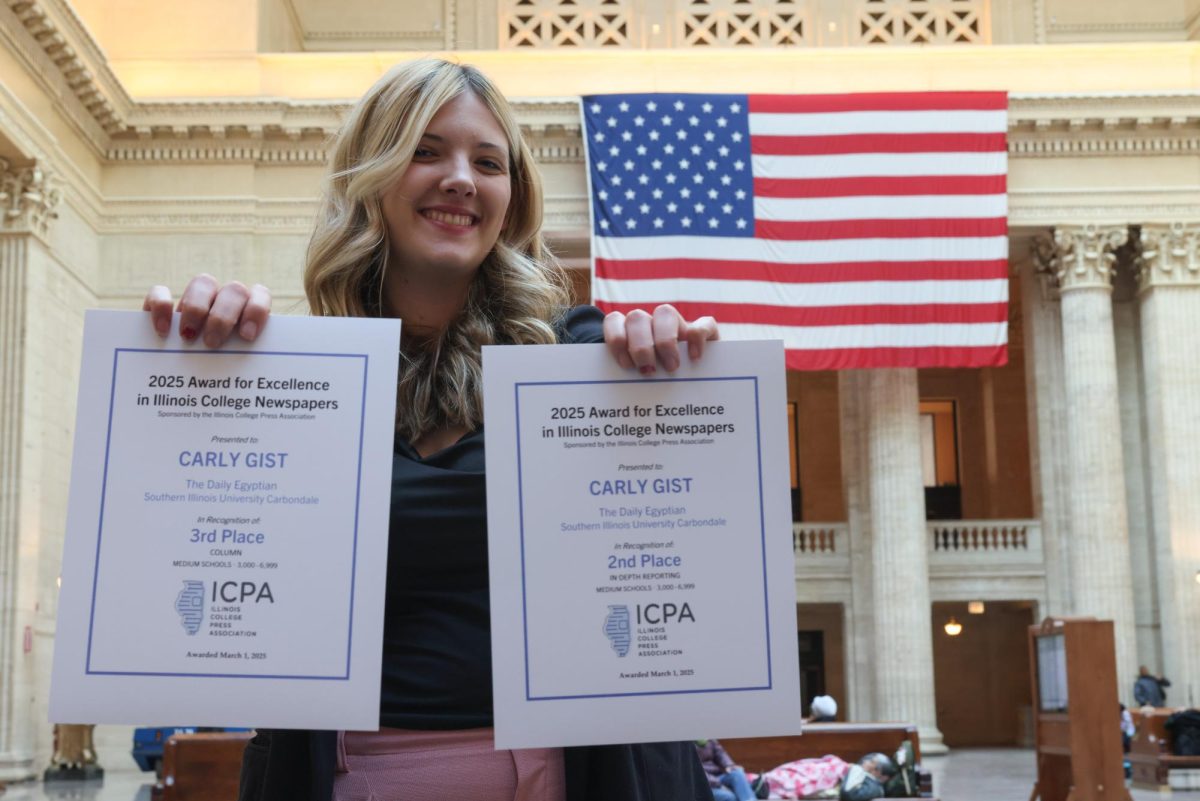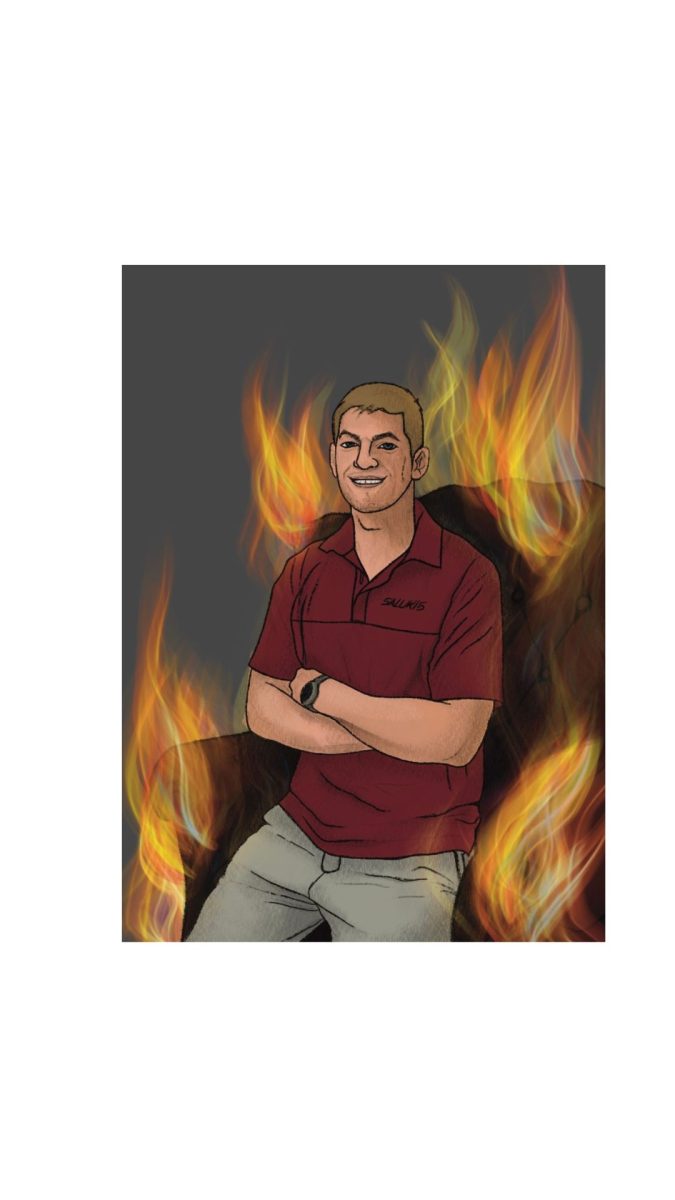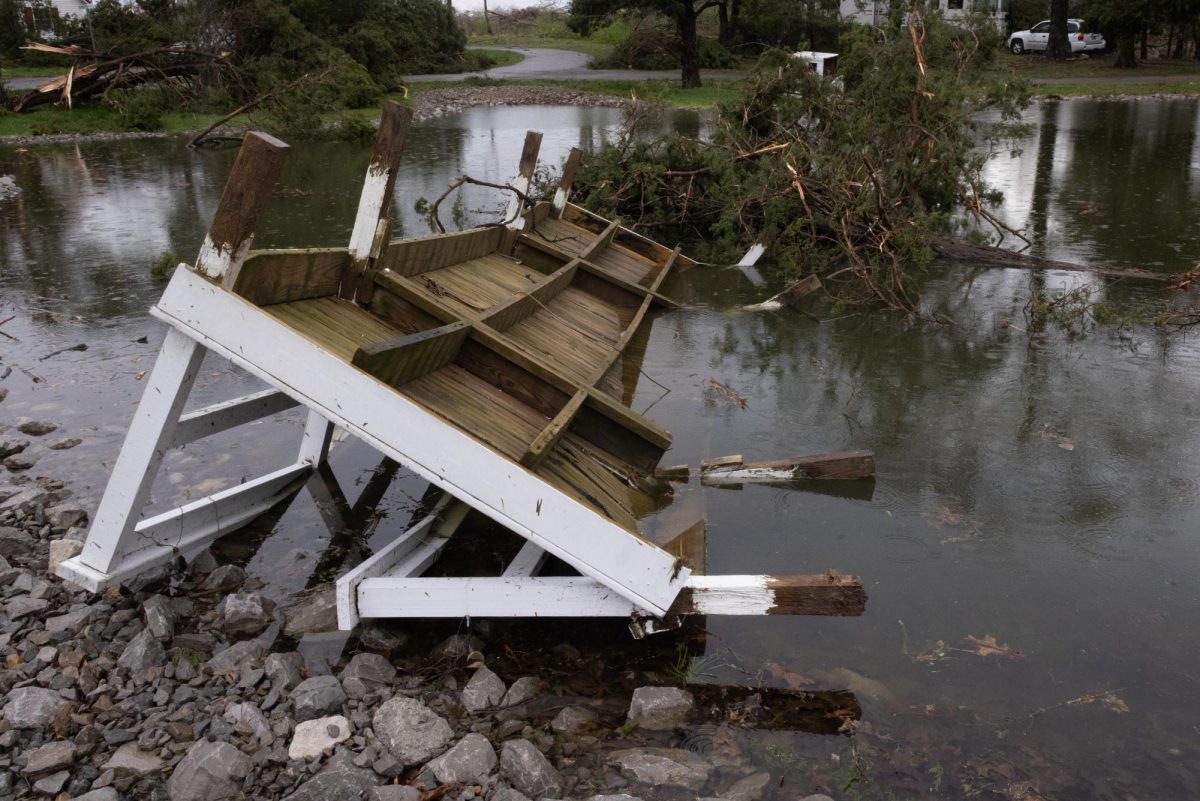EDITOR’S NOTE — This story includes content related to suicide. If you or someone you know needs help, the national suicide and crisis lifeline is available by calling or texting 988 or visiting the online chat at 988lifeline.org.
My best friend and I’s futures couldn’t look any different. Justyce is studying to become a lawyer, I’m studying to become a journalist. Yet as members of the University Honors Program (UHP), we pride ourselves on interdisciplinary studies.
Advertisement
UHP has brought me more opportunities than I can count. I’ve studied abroad, volunteered with numerous organizations and completed my core curriculum with hands-on seminars. The program keeps me on my toes and always pushes me outside of my comfort zone. Most recently, it led to me doing something I thought I’d never have the opportunity to do as someone in the arts and humanities: present at a research conference.
It started out as a joke, really. Last spring, Justyce and I attended a roundtable discussion about all of the Fall 2024 seminars being offered by UHP. After the event, we approached Darryl Clark, a professor of theater and dance whom I’ve interviewed for several Daily Egyptian stories, to find out more about the course he would be teaching.
The course was called “Games People Play.” It was described as a semester-long exploration of childhood games in the form of theater, film and dance. While the class ended up not aligning with our schedules, and neither of us were able to enroll, we had a great conversation with Clark about the importance of exploring subjects outside of our areas of interest. Because we were on the topic of film, Justyce made a joke about how the honors program, which allows students to propose course topics, should host a class about her favorite movie, “Heathers.”
Advertisement*
For those who aren’t familiar with the movie, “Heathers” is basically “Mean Girls” but with murder. The story follows Veronica Sawyer, a teenager navigating the social hierarchy of her small-town high school. She’s recently become a member of a powerful clique but finds that she hates it. One day, her boyfriend, J.D., comes with her to confront the ringleader, Heather Chandler, but the encounter ends in the girl’s death. To clear their names, Veronica and J.D. forge a suicide note in Heather Chandler’s handwriting. But as history proceeds to repeat itself, Veronica learns that J.D. is purposely killing students he does not like because he knows they will get away with it.
Clark laughed at our passion for the movie, and told us that while we probably couldn’t host an honors course solely based on it, if we could figure out what was so educational about it, we could submit an abstract for the Midwest Popular Culture Association/American Culture Association (MPCA/ACA) conference. While neither of us are film geniuses, we are overanalyzers, and we realized that despite using very extreme examples, the movie does have a point.
Teen suicide had reached its peak in the late ‘80s, according to the National Library of Medicine, and cable television was becoming more compelling. When the popular students died in the movie, the school turned it into a spectacle. Suicide notes were analyzed for English class, grief sessions were televised, and yearbook pages were dedicated to the victims. The glamorizations of their so-called “suicides” led other students to view death as a desirable path to popularity, creating a dangerous chain reaction.
We argued that “Heathers” set out to warn society about the glorification of tragedies in the media in the ‘80s, and with its 2010 musical adaptation drawing parallels to the social media age, it’s clear that not much has changed.
We wrote a quick abstract in May, received our acceptance email in June, and began researching when we returned to campus in August after summer break. We wrote a paper diving into three negative concepts from the movie that still impact teens today: performative activism, peer pressure and lack of adult awareness. Our research explored how these topics can contribute to the glamorization of mental illness, and in turn, suicide contagion.
The conference was held Oct. 4-6 at DePaul University in Chicago. We presented our research on Friday with a slideshow presentation. We then had the opportunity to sit through other panels, including one in the category “Print Media.” It was so fascinating to listen to research in my area of interest from people from all over the Midwest. I learned about the portrayal of girlhood in 19th and 20th century children’s literature, followed by a showcase of the waning interest from middle-grade readers today. A group of undergrads from Indiana University even presented their analysis of Taylor Swift’s name in the New York Times, and their presentation drew interesting parallels to an article I had written for the Daily Egyptian just a week before. The panel concluded with an examination of how journalists are negatively portrayed in television series.
Our paper ended up winning the Pat Brown Undergraduate Award, so we were invited back that evening for a ceremony. Panel discussions along with guest speakers were held the next day as well. Justyce and I spent quite a bit of time with the mentor we were assigned for the conference. His name was Arthur, and while he is originally from Ohio, he is currently a professor of English at a college in Toronto. Never in my entire life did I think I would be able to make connections with people this far away from home.
And because we had a full weekend in Chicago, we got to spend time exploring the city. We were given a free tour of the Art Institute, courtesy of MPCA/ACA, however our favorite place we visited was the American Writers Museum. All of its exhibits are interactive. We got to create our own characters, practice using a typewriter and learn about some of the authors we grew up reading in school.

The conference was an amazing experience, and we don’t plan to stop there. Clark has encouraged us to see how far our research can take us, and we will be submitting to the National Popular Culture Association/American Culture Association Conference as well. It is scheduled to take place April 16-19 in New Orleans, Louisiana. Submissions are open through Nov. 30, via its website, https://pcaaca.org/.
This trip wouldn’t have been possible without the help of our academic programs. UHP, School of Journalism and School of Liberal Arts helped in funding our journey, and I don’t think I will ever be able to express how truly grateful we are for that.
This experience has taught me several crucial lessons that I will need not just as a journalist, but in any professional setting. One, networking is so important. Building relationships with both sources and colleagues can open doors you might not even know are there. Two, a well-rounded education means putting in work in areas that aren’t your expertise. I might not plan to go into film or theater, but entertainment and mental health come up a lot in my journalism and social work classes. And lastly, the experience reminded me that there is always more to the story. Sure, “Heathers” is a dark comedy, but there’s also a bigger picture behind it. I hope that our research was able to remind just one person that mental health should be taken seriously.
Every story has its layers, and as a journalist, it is my job to uncover the full narrative. By continuing to explore new subjects and fields, I hope to become the most versatile writer I can possibly be.
News editor Carly Gist can be reached at cgist@dailyegyptian.com. To stay up to date on all your southern Illinois news, be sure to follow The Daily Egyptian on Facebook and on X @dailyegyptian.
Advertisement



